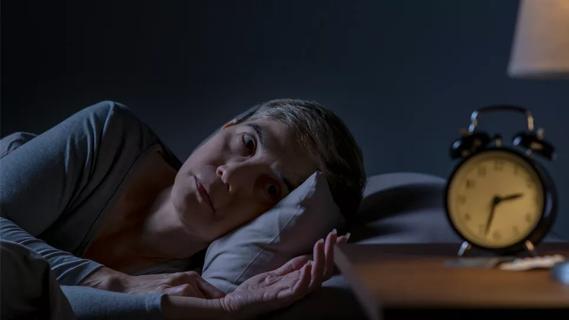Insights into the six major categories of sleep disorders
Approximately 40% of American adults get six hours or less of sleep a night, which is significant sleep deprivation. That can lead to medical and psychiatric illnesses, as well as social issues.
Advertisement
Cleveland Clinic is a non-profit academic medical center. Advertising on our site helps support our mission. We do not endorse non-Cleveland Clinic products or services. Policy
“We need sleep to restore every cell in every organ of our body, and the lack of sleep is having long-term consequences,” says Nancy Foldvary-Schaefer, DO, MS, Director of the Sleep Disorders Center and a staff neurologist in the Epilepsy Center at Cleveland Clinic. “Sleep care becomes a part of brain health over the long haul.”
In the latest episode of Cleveland Clinic’s Neuro Pathways podcast, Dr. Foldvary-Schaefer discusses differential diagnosis of sleep disorders in adults. She talks about:
Click the podcast player above to listen to the 25-minute episode now, or read on for a short edited excerpt. Check out more Neuro Pathways episodes at clevelandclinic.org/neuropodcast or wherever you get your podcasts.
This activity has been approved for AMA PRA Category 1 Credit™. After listening to the podcast, you can claim your credit here.
Podcast host Glen Stevens, DO, PhD: I would imagine that most of us have experienced difficulty with sleep at some point, on and off, for many different reasons. But when does it really become a sleep disorder?
Dr. Foldvary-Schaefer: Most sleep disorders are diagnosed when the symptoms have lasted at least three months. So, for example, most adults have had a night or two of insomnia at some point in their lives — just traumatic life events or whatever the case may be, major stressors — and have trouble sleeping. But when that happens on a regular basis, say three nights a week for at least three months, we would consider that a chronic insomnia problem.
Advertisement
The vast majority of adults have had nights of insomnia, and 10% of adults have chronic insomnia. Almost 30% of adults have sleep apnea. Those are the two most common sleep disorders, but there are four other major categories of disorders that most people don’t even recognize that can also have significant morbidity.
Dr. Stevens: Please share those with us.
Dr. Foldvary-Schaefer: There are circadian rhythm disorders, the hypersomnias, sleep-related movement disorders and the parasomnias. To explain, the hypersomnias are narcolepsy and related disorders; the primary sleep-related movement disorder is restless legs syndrome; and the parasomnias include REM behavior disorder and the non-REM parasomnias, which may be a bit more benign than REM behavior disorder.
Some of these disorders we now recognize are intimately associated with neurological conditions. This is why it’s useful for neurologists to have a sense of how to take a sleep history, or at least how to recognize the big disorders. These include severe hypersomnia, which can coexist in the form of narcolepsy or a medically induced hypersomnia in some patients with neurological conditions, and REM behavior disorder, because of its association with subsequent development of the synucleinopathies, which is now a well-established phenomenon.
So, sometimes in the sleep center, sleep doctors see REM behavior disorder and refer to our colleagues in cognitive neurology or movement disorders when we begin to see or hear about other signs and symptoms of neurological disease, because often this will be a progression into a clearly defined neurological disease.
Advertisement
Advertisement

Study highlights value of sleep disorder screening and targeted management strategies

Specificity in study criteria yields sleep disorder insights

Large cohort study suggests need for routine sleep screening as part of neurological care

Testing options and therapies are expanding for this poorly understood sleep disorder

Normal or inconsistent MSLT results should not rule out this debilitating disorder

Advice for diagnosing and managing sleep disturbances in children

Bedroom safety, medication use and ethical dilemmas are addressed

Combining group telehealth sessions with one-on-one sessions shortens time to follow-up care